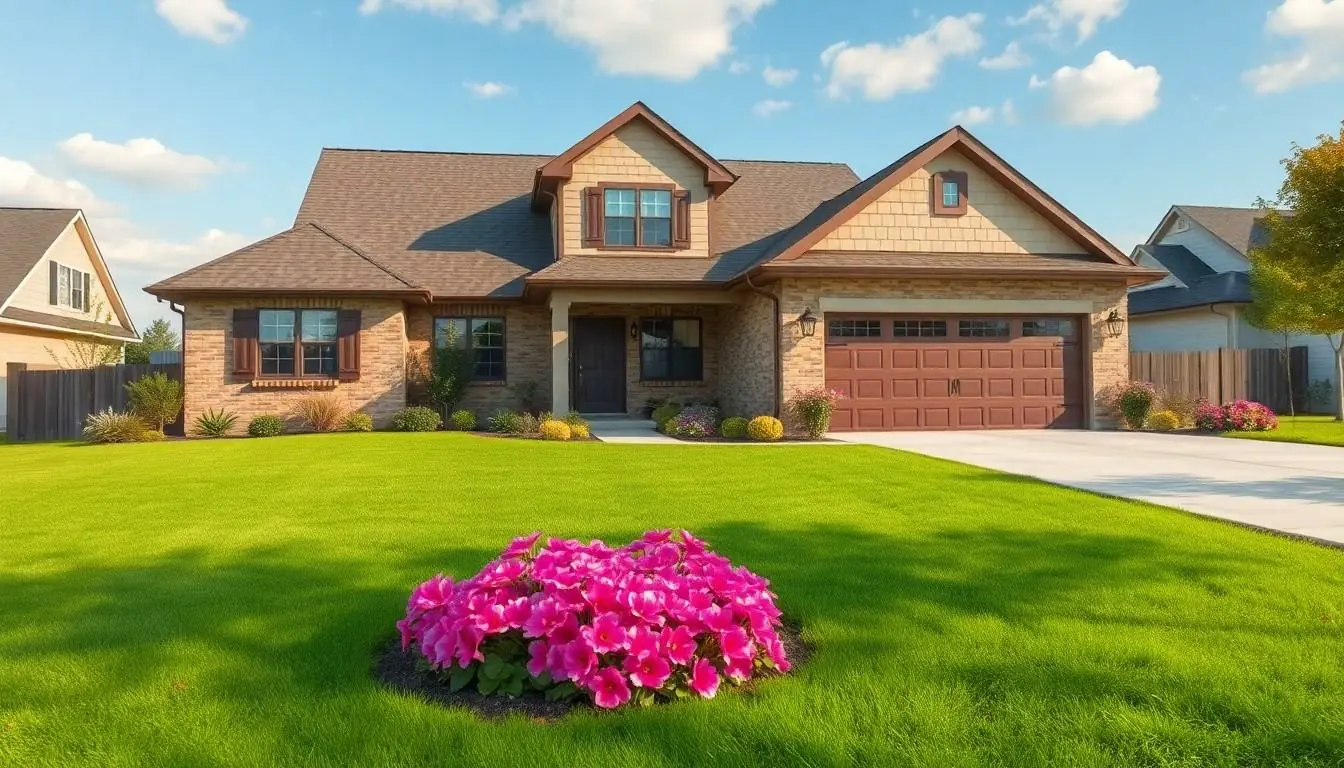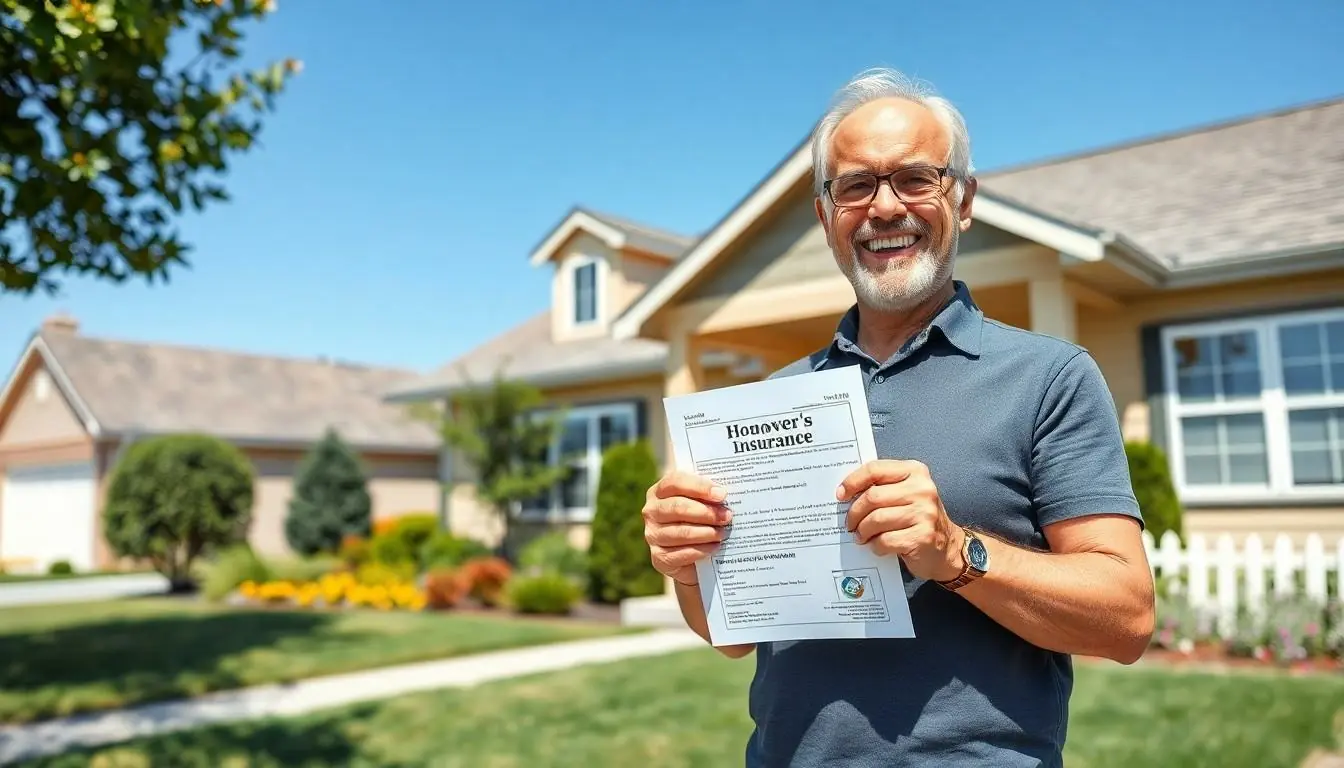Homeowner’s insurance: it’s like a superhero cape for your house, swooping in to save the day when disaster strikes. Whether it’s a rogue raccoon causing chaos in the attic or an unexpected plumbing mishap that turns your living room into a swimming pool, having the right coverage can make all the difference.
But what exactly does this magical policy cover? From protecting your prized possessions to shielding you against liability claims, homeowner’s insurance is more than just a safety net; it’s a lifeline. Understanding the ins and outs of your coverage can feel like deciphering ancient hieroglyphics, but fear not! With a little guidance, navigating this essential topic will be as easy as pie—just without the messy cleanup. Get ready to uncover the secrets of homeowner’s insurance and ensure your castle remains standing, no matter what life throws its way.
Table of Contents
ToggleOverview of Home Owner Insurance
Homeowner’s insurance offers essential financial protection against various risks associated with homeownership. Coverage typically includes dwelling protection, safeguarding the house and any attached structures, which encompasses damages caused by fire, storms, or vandalism.
Personal property coverage protects essential items within the home, such as furniture, electronics, and clothing, from loss or theft. Liability coverage is another important aspect, covering legal expenses arising from injuries or property damage inflicted on others.
Additional living expenses coverage assists homeowners who face temporary displacement due to insurance-covered incidents. This coverage contributes to costs incurred while finding alternative living arrangements.
Specific endorsements or riders can enhance a policy, supplementing basic coverage. For example, they may cover high-value items like jewelry or artwork that exceed standard limits. Flood insurance and earthquake insurance often require separate policies, ensuring protection against natural disasters outside standard coverage.
Understanding the particulars of homeowner’s insurance ensures homeowners make informed decisions. Each policy is unique, and reviewing terms carefully helps identify specific coverage limits and exclusions. Seeking the guidance of an insurance agent can clarify ambiguities, equipping homeowners with the knowledge to protect their investments effectively.
Types of Coverage

Homeowner’s insurance includes several types of coverage that protect against different risks.
Dwelling Coverage
Dwelling coverage safeguards the physical structure of the home against various perils. Protection extends to damages caused by natural disasters like fires, storms, or vandalism. It generally covers the home’s walls, roof, and built-in appliances. Repair or replacement costs for these structures can be significant, making this coverage essential for any homeowner. Rates often depend on the home’s value and location, which influences risk levels.
Personal Property Coverage
Personal property coverage protects essential items within the home. This includes furniture, electronics, and clothing, among others. In cases of theft, fire, or other covered incidents, this coverage helps homeowners recover financially. Policies usually offer a percentage of the dwelling’s value as coverage limits. Assessing the total value of possessions is important, ensuring adequate protection for all belongings.
Liability Protection
Liability protection guards homeowners against legal claims resulting from injuries or property damage to others. Coverage includes legal fees and potential settlements, offering financial security in the event of lawsuits. For example, if a guest falls on the property, this coverage aids in managing associated costs. Limits may vary based on individual policies, underscoring the importance of reviewing coverage details.
Additional Living Expenses
Additional living expenses coverage supports homeowners if they become temporarily displaced due to a covered event. This may include costs for hotel stays, meals, and other normal expenses incurred while the home is uninhabitable. Limits or time frames often apply, so it’s crucial to understand specific policy details. Ensuring this coverage can alleviate financial stress during unexpected transitions.
Exclusions in Home Owner Insurance
Homeowner’s insurance provides essential coverage, yet it includes several exclusions that policyholders should recognize. Understanding these exclusions helps homeowners avoid surprises during claims.
Common Exclusions
Many homeowner policies exclude certain types of damage and losses. Flood damage typically isn’t covered, requiring separate flood insurance. Wear and tear or maintenance-related issues fall outside standard coverage. Homeowners also find that damage from pests like termites remains an exclusion. Acts of war or nuclear incidents aren’t included in most policies either. Understanding these common exclusions lets homeowners evaluate their needs and consider additional coverage options.
Natural Disasters
Natural disasters often lead to significant losses, yet standard homeowner’s insurance usually excludes several of these risks. Floods represent a primary concern, as standard policies tend to leave these events uncovered. Earthquakes also require separate policies to ensure protection against damage. In many cases, homeowners must seek additional coverage for hurricanes or landslides depending on their geographical location. Recognizing this limitation encourages homeowners to proactively secure adequate protection specific to their environment.
Factors Affecting Coverage
Homeowner’s insurance coverage can vary based on specific factors that influence risk and potential losses.
Location
Location plays a critical role in determining homeowner’s insurance coverage. Areas prone to natural disasters, such as floods or earthquakes, often face higher premium costs due to increased risk. Homes located near bodies of water may require flood insurance, which isn’t typically included in standard policies. Insurers assess geographic factors, including crime rates in the vicinity. High-crime neighborhoods may incur additional costs due to potential theft and vandalism. Proximity to fire departments and emergency services also impacts premiums, affecting coverage options.
Property Value
Property value significantly influences homeowner’s insurance coverage. Higher-valued homes generally incur larger premiums because replacement costs become greater. Insurers consider factors like home size, materials used, and unique features when determining valuation. Luxury items such as artwork or jewelry may require additional coverage, leading to endorsements or riders. Property value assessments ensure sufficient coverage for rebuilding after a total loss. Changes in property value, driven by market trends or renovations, should prompt policy reviews to maintain adequate protection levels.
Tips for Choosing the Right Policy
Selecting the right homeowner’s insurance policy requires careful consideration of various factors. Understanding personal needs greatly influences the choice of coverage.
Assessing Your Needs
Identifying key protection areas forms the basis of any effective policy. Homeowners should evaluate the value of their property and belongings. Consideration of local risks like flooding or theft is crucial in determining required coverage. Levels of personal and liability protection must reflect individual circumstances. Reviewing additional living expenses can help estimate costs during temporary displacement. Gathering this information leads to a tailored policy that meets specific needs.
Comparing Different Policies
Reviewing multiple homeowners insurance policies enables better decision-making. Each policy comes with different coverage limits and exclusions. Homeowners should analyze premiums versus benefits across options. Taking note of customer service ratings also enhances the selection process. Inclusion of endorsements or riders varies among providers, affecting overall coverage. Seeking quotes from different insurers allows for effective comparison. Making informed choices leads to the acquisition of a policy that provides optimal protection.
Understanding homeowner’s insurance is essential for safeguarding one’s investment. It provides vital coverage against various risks that homeowners face daily. From protecting the physical structure of the home to covering personal belongings and liability claims, this insurance acts as a financial safety net during unexpected events.
Homeowners should regularly review their policies to ensure adequate coverage as property values and personal circumstances change. By being aware of exclusions and considering additional endorsements, they can tailor their insurance to fit specific needs. In doing so, homeowners can achieve peace of mind knowing they’re well-protected against life’s uncertainties.



